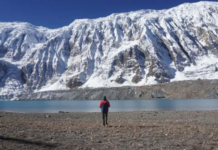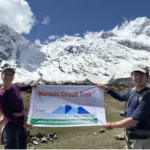Nestled in the southwestern region of Nepal, Bardia National Park represents one of South Asia’s most pristine wilderness areas. This remarkable conservation zone offers visitors an authentic safari experience far from the crowds that frequent more popular destinations. A Bardia wildlife safari provides adventurers with extraordinary opportunities to encounter endangered species in their natural habitat while supporting vital conservation efforts in this biodiverse region.
The Untouched Wilderness of Bardia
Bardia National Park, established in 1988, encompasses approximately 968 square kilometers of diverse terrain including riverine forests, grasslands, and sal forests. Unlike its more famous counterpart, Chitwan National Park, Bardia remains relatively untouched by mass tourism, preserving its authentic wilderness character. This remote sanctuary offers a genuine safari experience where nature dictates the rhythm of exploration.
The park’s location in Nepal’s Terai region creates a unique ecosystem where the Himalayan foothills transition into subtropical lowlands. This geographical diversity supports an extraordinary range of flora and fauna, making it a biodiversity hotspot of international significance. The Karnali and Babai Rivers flow through the park, serving as lifelines for countless species and creating dynamic riparian habitats.
Wildlife Encounters
Bardia National Park harbors Nepal’s highest concentration of Bengal tigers, with recent conservation successes contributing to a growing population of these magnificent predators. While tiger sightings remain challenging due to the elusive nature of these cats, the less disturbed environment of Bardia increases the probability of meaningful encounters compared to more heavily visited parks.
The park serves as sanctuary to approximately 30 different mammal species, including several endangered inhabitants. The greater one-horned rhinoceros, having been successfully reintroduced to the park, now maintains a small but stable population. Wild elephants traverse the forests in small herds, while leopards patrol their territories under the forest canopy.
Bardia’s expansive grasslands support impressive populations of spotted deer, sambar deer, hog deer, and barking deer. These herbivores provide the foundational prey base for the park’s predators while offering safari-goers reliable wildlife sightings. The critically endangered Gangetic dolphin navigates the park’s rivers, representing one of the world’s rarest freshwater mammals.
Avian enthusiasts will appreciate Bardia’s recorded 400+ bird species, including the endangered Bengal florican, lesser florican, and Sarus crane. The diversity of raptors, waterfowl, and passerines makes every safari drive or walk a potential ornithological discovery.
Safari Experiences
A Bardia wildlife safari typically offers several distinctive exploration methods, each providing unique perspectives on the park’s ecosystem:
Jeep Safaris enable visitors to cover substantial territory, maximizing encounters with diverse habitats and wildlife. These guided explorations follow established routes through the park’s various ecological zones while minimizing environmental impact.
Walking Safaris provide an intimate connection with the forest environment, engaging all senses in the wilderness experience. Accompanied by experienced naturalists and armed rangers, these treks offer opportunities to study animal tracks, identify plants, and possibly encounter wildlife at eye level – creating a profound understanding of the ecosystem’s interconnections.
River Safaris along the Karnali River offer peaceful wildlife observation opportunities as animals congregate near water sources. Drifting silently in traditional wooden boats allows for unobtrusive wildlife viewing, particularly of aquatic species and birds.
Elephant-Back Safaris have traditionally been offered but are increasingly scrutinized for animal welfare concerns. Conservation-minded travelers may wish to consider alternative exploration methods that prioritize ethical wildlife interactions.
Conservation Challenges and Successes
Bardia National Park represents both conservation challenges and remarkable successes. The park has witnessed significant recovery of endangered species populations through dedicated protection efforts. Anti-poaching patrols, habitat restoration projects, and community involvement have contributed to increasing tiger numbers – a conservation success story of international significance.
The park faces ongoing challenges including human-wildlife conflict, habitat fragmentation due to infrastructure development, and climate change impacts. Conservation organizations work collaboratively with local communities to develop sustainable solutions that balance human needs with wildlife protection. Buffer zone management programs engage surrounding villages in conservation through educational initiatives and alternative livelihood development.
Cultural Dimensions
A complete Bardia wildlife safari experience encompasses not only natural wonders but cultural richness as well. The indigenous Tharu communities surrounding the park maintain traditional ecological knowledge accumulated through generations of living alongside wilderness. Many Tharu people now serve as skilled naturalists and guides, sharing their profound understanding of the forest ecosystem with visitors.
Community-based tourism initiatives offer opportunities to experience Tharu culture through village visits, cultural performances, and traditional cuisine. These interactions provide meaningful cultural exchange while generating economic benefits that support conservation efforts. The traditional Tharu stick dance performances showcase the community’s artistic traditions and their historical relationship with the forest environment.
Practical Considerations
Visiting Bardia requires thoughtful planning. The optimal seasons span October through March when drier conditions concentrate wildlife around water sources and improve visibility. The monsoon season (June-September) brings lush vegetation but challenging conditions for wildlife viewing and transportation.
Accommodation options range from basic community homestays to comfortable lodges offering modern amenities within a wilderness setting. Conservation-focused properties implement sustainable practices like solar power, water conservation, and waste reduction while supporting local employment.
Reaching Bardia requires commitment, with options including domestic flights to Nepalgunj followed by road transfer, or extended overland journeys from Kathmandu. This relative inaccessibility helps preserve the park’s pristine character while rewarding those willing to make the journey.
Conclusion
A Bardia wildlife safari represents far more than a tourist activity – it offers profound engagement with one of South Asia’s most intact ecosystems. The park exemplifies successful conservation through collaboration between government agencies, local communities, and international organizations. By visiting Bardia responsibly, travelers contribute to these conservation efforts while experiencing wilderness in its authentic form.
The continued protection of Bardia National Park and its extraordinary biodiversity depends on sustainable tourism that generates economic incentives for conservation. As global biodiversity faces unprecedented threats, sanctuaries like Bardia demonstrate how dedicated protection efforts can reverse decline and create hopeful models for wilderness preservation worldwide. For those seeking genuine wildlife encounters in an unspoiled natural setting, Bardia National Park stands as Nepal’s premier wildlife destination – a testament to the enduring power of conservation vision and implementation.










